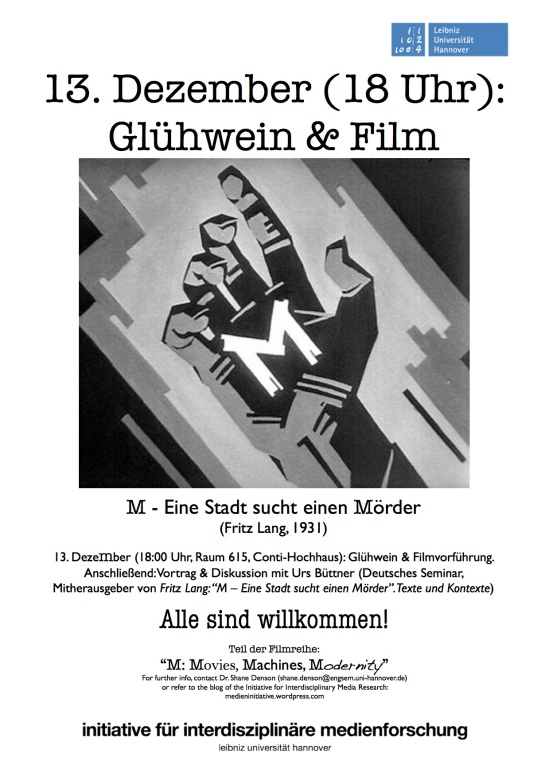
On Saturday, December 15 (11:30 am, 6th floor of the Conti-Hochhaus, room TBA) — in the context of a research colloquium of the American studies department — I will be presenting some work in progress from my “Habilitation” project Figuring Serial Trajectories (more info about my project here; also, more info about the larger collaborative project with Ruth Mayer on serial figures here, and the website of the overarching research group on popular seriality here).
The topic of my talk will be Batman, computer games, and digital media environments. I will be expanding on, and trying to make somewhat more concrete, the idea of “parergodicity” which I presented at the recent FLOW conference (see here for my position paper).
Here is the abstract for my talk:
Batman and the “Parergodic” Work of Seriality in Interactive Digital Environments
Shane Denson
In the twentieth century, serial figures like Tarzan, Frankenstein’s monster, and Sherlock Holmes enacted a broadly “parergonal” logic; that is, in their plurimedial instantiations (in print, film, radio, TV, etc.), they continually crossed the boundaries marked by these specific media, slipped in and out of their frames, and showed them – in accordance with the logic of the parergon as described by Jacques Derrida – to be reversible. Through such oscillations, serial figures were able to transcend the particularity of any single iteration, and more importantly they were able to constitute themselves as higher-order frames or media, within which the transformations of first-order (i.e. apparatically concrete) media could be traced in the manner of an ongoing – though not altogether linear – series.
In the twenty-first century, many classic serial figures have declined in popularity, while the basic functions and medial logics of those that remain have been transformed in conjunction with the rise of interactive, networked, and convergent digital media environments. As I will argue in this presentation, the figure of Batman exemplifies this shift as the transition from a broadly “parergonal” to a specifically “parergodic” logic; the latter term builds upon Espen Aarseth’s notion of the “ergodic” situation of gameplay – where ergodics combines the Greek ergon (work) and hodos (path), thus positing nontrivial labor as the aesthetic mode of players’ engagement with games. Expanded beyond narrowly ludological frames of reference to include a wider variety of interactive and participatory potentials in contemporary culture, ergodic media give rise to new forms of seriality that accompany, probe, and trace the developmental trajectories of the new media environment. These new forms and functions of seriality, as embodied by a figure like Batman, raise questions about the blurring of relations between work and play, between paid labor and the incidental work or “immaterial labor” culled from our leisure activities and entertainment practices, in the age of the “control society” (Deleuze) or of “post-cinematic affect” (Shaviro). Following Batman’s transitions from comics to graphic novels, to the films of Tim Burton and Christopher Nolan, and on to the popular and critically acclaimed videogames Arkham Asylum and Arkham City, I will demonstrate that the dynamics of border-crossing which characterized earlier serial figures has now been re-functionalized in accordance with the ergodic work of navigating computational networks – in accordance, that is, with work and network forms that frame all aspects of contemporary life.







